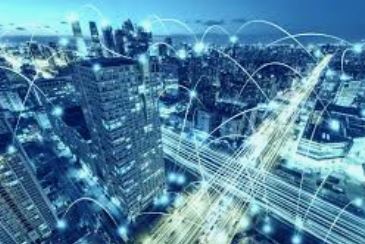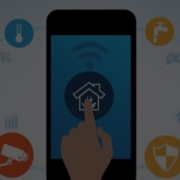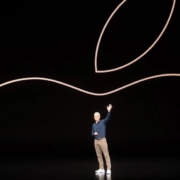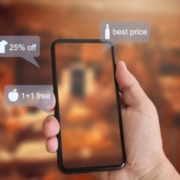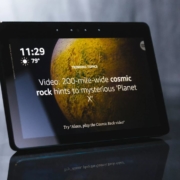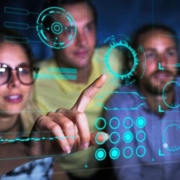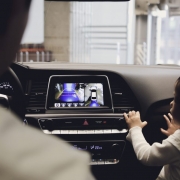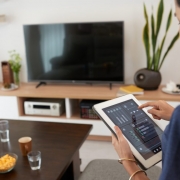Smart cities: 6 essential technologies
Smart cities are connected cities, and they work in conjunction with everything from IoT sensors to open data collection and smart streetlights to provide better services and better communication.
The smart city industry is projected to be a $400 billion market by 2020, with 600 cities worldwide. These cities are expected to generate 60% of the world’s GDP by 2025, according to McKinsey research, as previously published in TechRepublic.
While there are many definitions of a smart city, in general, a smart city utilizes IoT sensors, actuators and technology to connect components across the city, and it impacts every layer of a city, from underneath the streets, to the air that citizens are breathing. Data from all segments is analyzed, and patterns are derived from the collected data.
There are key technologies that make a smart city work. Here are the top six:
1. Smart energy
“Lighting is ubiquitous—it’s everywhere that people work, travel, shop, dine, and relax. Digital communications and energy-efficient LED lighting are revolutionizing urban lighting infrastructures already in place, transforming them into information pathways with the capacity to collect and share data and offer new insights that enable, and really drive, the smart city,” said Susanne Seitinger, PhD., Philips Lighting, professional systems.
Overall energy usage is also part of a smart city. “Many may have experienced this already with the installation of smart meters at their homes. But with the rise of home solar power systems and electric vehicles, hardware and software technology will allow for the potential of better grid management, optimization of power production through different sources and distributed energy production. Furthermore, buildings that monitor their energy usage actively and report this data to utilities can reduce their costs. This will ultimately lead to lower pollution and much better efficiency as cities become more urbanized,” said Herman Chandi, co-founder ofCommunityLogiq.
And there are also smart grids and smart meters. “Smart grid solutions play an important role in the development of smart cities. From prepaid energy applications to advanced metering infrastructure, there are several solutions to enhance energy services. With a smart grid, you can improve outage detection, speed of data capture, continuing and disaster recovery, field service operations and overall grid modernization techniques,” said Mike Zeto, general manager and executive director of AT&T Smart Cities.
2. Smart transportation
A smart city supports multi-modal transportation, smart traffic lights and smart parking.
“One of the key areas that we have seen a lot of activity on has to do with mobility. Anything around transportation, traffic monitoring, parking,” said Sanjay Khatri, director of product marketing and IoT services for Jasper. “These are areas where cities are seeing a very fast return on investment. It not only helps to reduce the cost of monitoring parking and making sure that they are collecting fines, it’s also reducing congestion.”
By making parking smarter, people spend less time looking for parking spots and circling city blocks. Smart traffic lights have cameras that monitor traffic flow so that it’s reflected in the traffic signals, Khatri said.
Even city buses are becoming connected, so that people have real time information on when a bus will arrive at a bus stop. In Australia, traffic lights are prioritized based on the bus schedules so that traffic flows more freely during rush hours, Khatri said.
Chandi said, “it’s using sensors to collect data about the movement of people, all forms of vehicles and bikes. A smart city is one that greatly reduces vehicle traffic and allows people and goods to be moved easily through various means. Intelligent traffic systems are an example of this and the achievement of autonomous vehicle transportation would be a prime example of success for a smart city, as this could reduce vehicle related deaths. All these efforts would reduce pollution as well as time stuck in traffic, resulting in a healthier population.”
3. Smart data
The massive amounts of data collected by a smart city must be analyzed quickly in order to make it useful. Open data portals are one option that some cities have chosen in order to publish city data online, so that anyone can access it and use predictive analytics to assess future patterns. Companies such as CommunityLogiq are working with cities to help them analyze data, and they’re in the Startup in Residence (STiR) program for the city of San Francisco.
“The pervasiveness of technology and the expansion of open data policies is about to unleash an economic growth engine for urban innovation that we have never seen. We are moving from analyzing data that exists within city hall, to generating new data from sensors that are deployed all across cities for use by multiple departments and people for multiple uses,” said John Gordon, chief digital officer at Current, powered by GE.
Even the data collected by streetlights can be used to benefit citizens. “Hidden within the exponential volumes of data collected from connected lighting systems and other IoT devices are valuable insights and information about how citizens interact with cities. For instance, traffic data captured by streetlights can uncover a prime location for a new restaurant in a revitalized neighborhood. Predictive analytics helps cities filter and translate data into relevant and actionable information that makes city life better, easier, and more productive,” Seitinger said.
4. Smart infrastructure
Cities will be able to plan better with a smart city’s ability to analyze large amounts of data. This will allow for pro-active maintenance and better planning for future demand. Being able to test for lead content in water in real time when the data shows a problem is emerging could prevent public health issues, Chandi said.
Having a smart infrastructure means that a city can move forward with other technologies and use the data collected to make meaningful changes in future city plans.
5. Smart mobility
“Mobility refers to both the technology and the data which travels across the technology. The ability to seamlessly move in and out of many different municipal and private systems is essential if we are to realize the promise of smart cities. Building the smart city will never be a project that is “finished.” Technology needs to be interoperable and perform to expectations regardless of who made it or when it was made. Data also needs to be unconstrained as it moves between systems, with all due attention to intellectual property, security and privacy concerns. For this, public policy and legal technology needs to be state of the art,” said Tom Blewitt, director of principal engineers, UL.
6. Smart IoT devices
And finally, one of the key components that ties everything together in a smart city is IoT devices.
“Whether we like it or not, sensors and actuators in our cities are here to stay. Fusing sensor information into our daily life and integrating it all with third party social networks will knit the fabric of society closer together, while leaving city leaders to grapple with serious privacy and security challenges,” said Carl Piva, vice president of strategic programs at TM Forum.
Sensors are essential in a smart city, said Scott Allen, CMO of FreeWave Technologies. Allen said that a smart city has “a wide range of reporting devices such as sensors, visibility devices and other end points that create the data that makes a smart city work.”
Blewitt said, ” In a smart city, information will increasingly be obtained directly from purposefully deployed sensors or indirectly from sensors deployed for another purpose but which gather and share useful information. With this information, freely exchanged, complex city systems can be managed in real-time and, with sufficient integration, to minimize unintended consequences. As dependence on sensors grows, so too will the need that they be reliable and that the systems to which they are connected will be able to tolerate the inevitable failures.”
Beacons are another part of IoT, and one of the problems with a smart city is the vast amount of information. Too much information can be overwhelming. Information received at a time when one is unable to take advantage of it is essentially noise, Blewitt said.
“As cities move from millions to billions and then trillions of devices transmitting usable and potentially unusable information, bandwidth efficiency and capacity could be challenged. Short range notification that a user-selected need can be fulfilled nearby, whether it is the location of a subway station or a service, provides convenience without tying up some of the bandwidth of the carrier data networks. Perhaps this will have the side benefit of a reduction in the number of signs and therefore the visual clutter that they cause on our city streets,” he said.
Each of these technologies work together to make a smart city even smarter. As the world’s population grows, and more people move into urban areas, the need for smarter cities will increase to make the best use of available resources.

